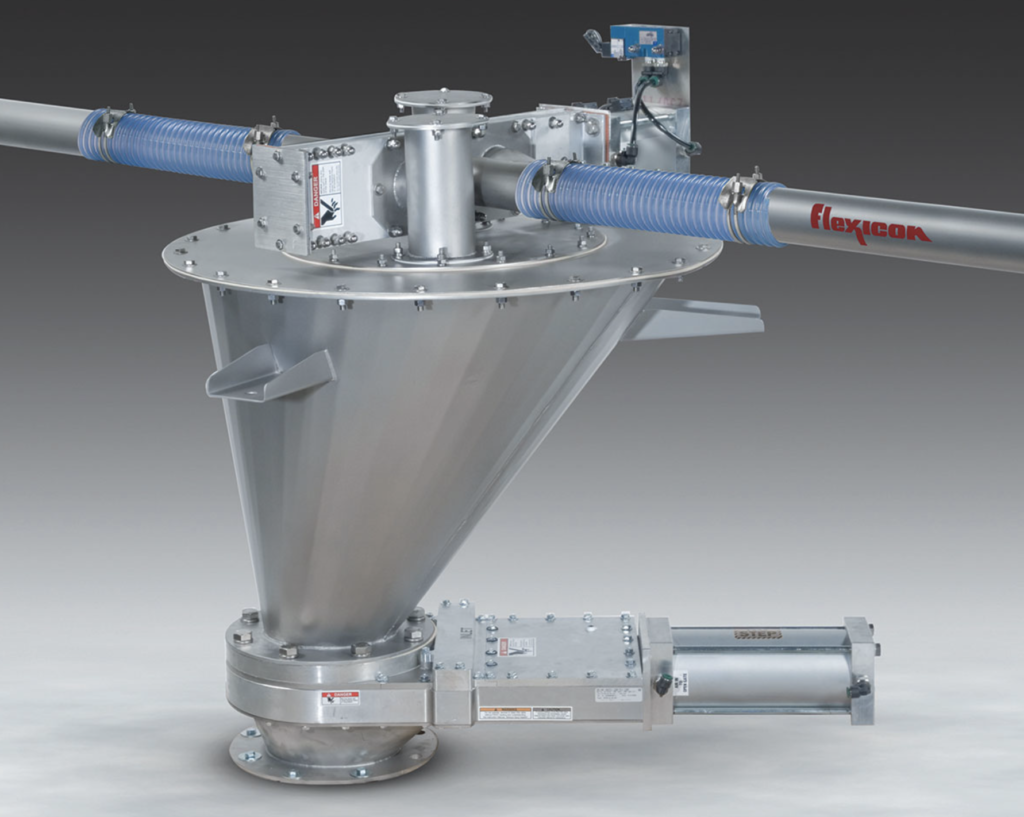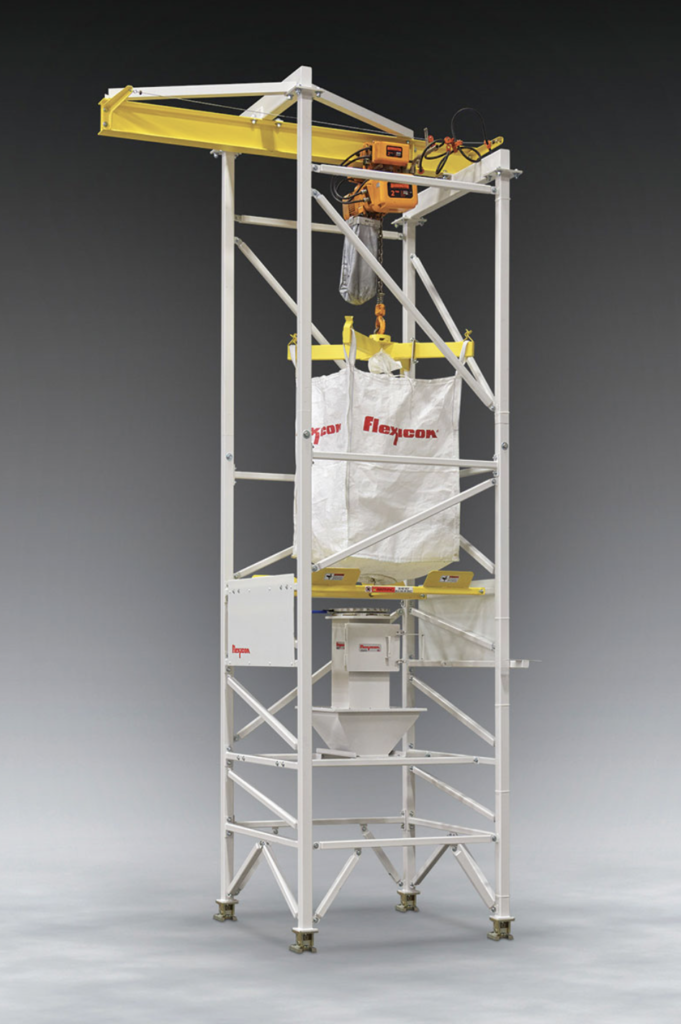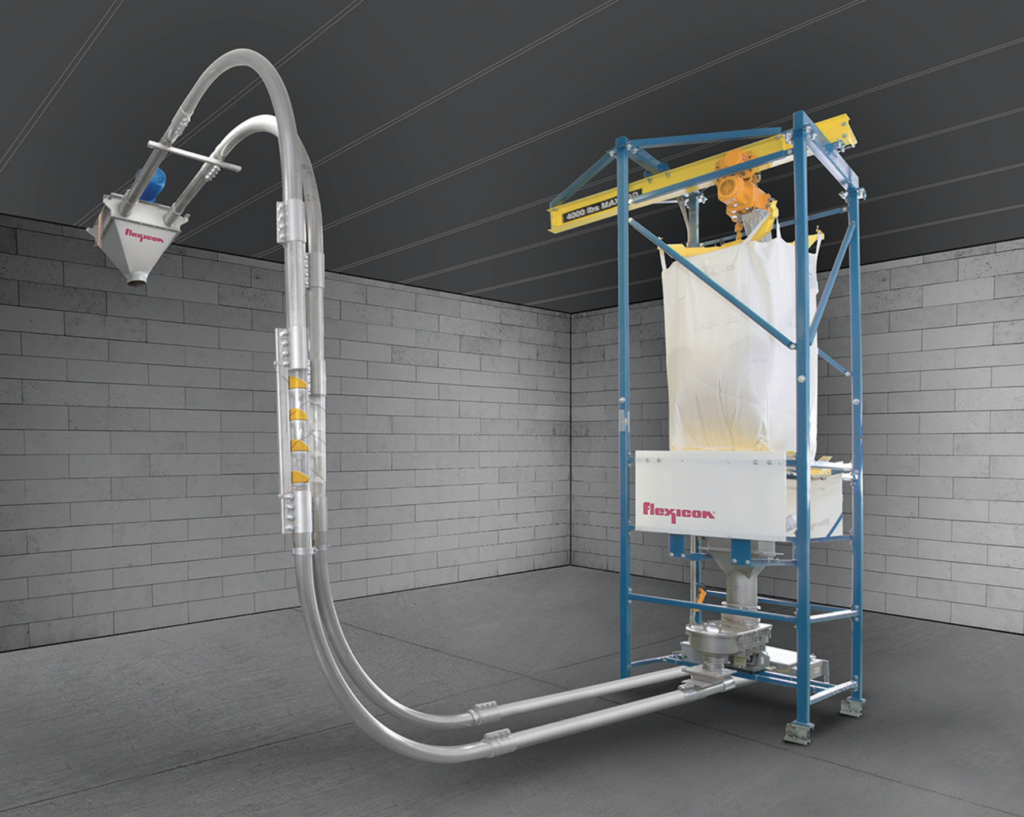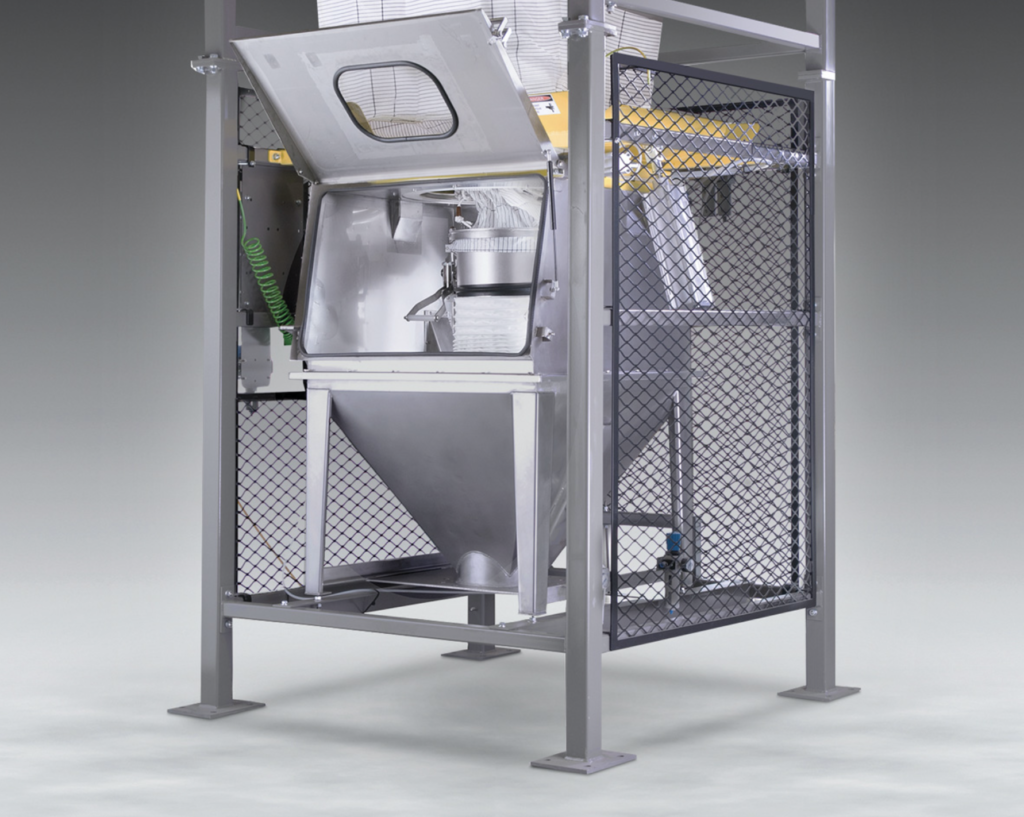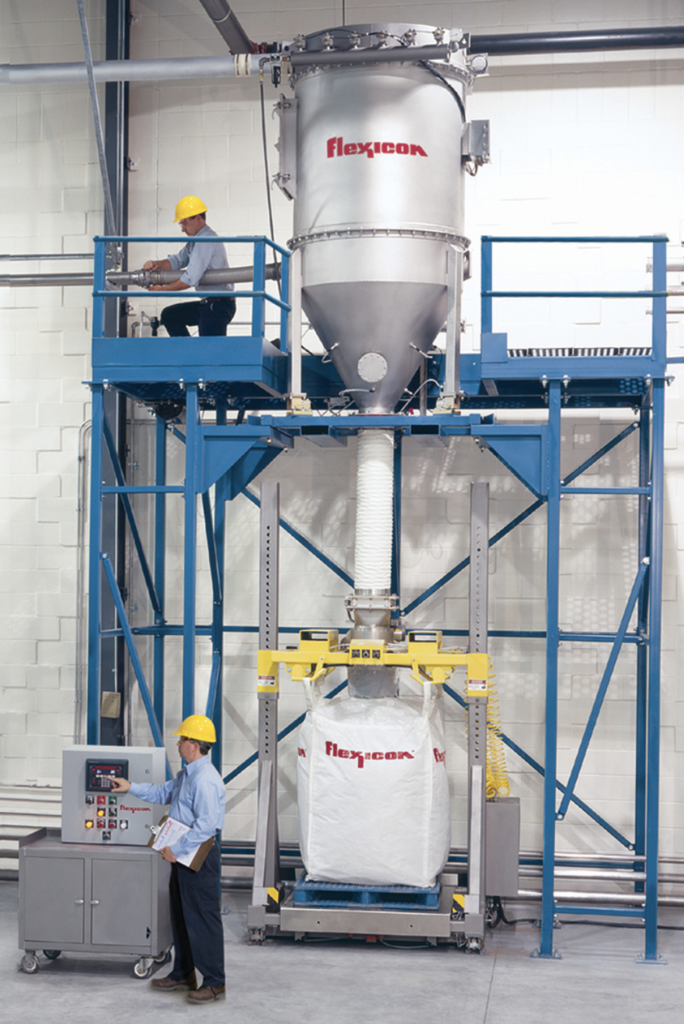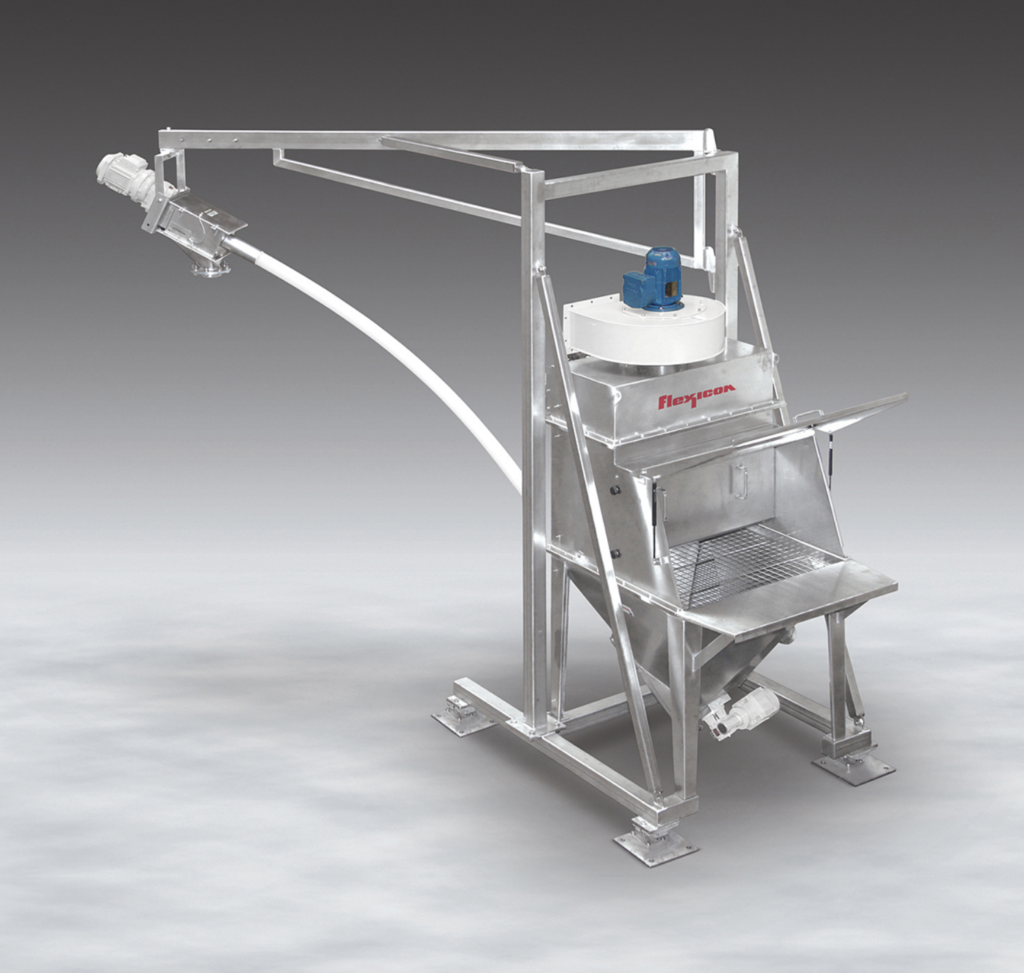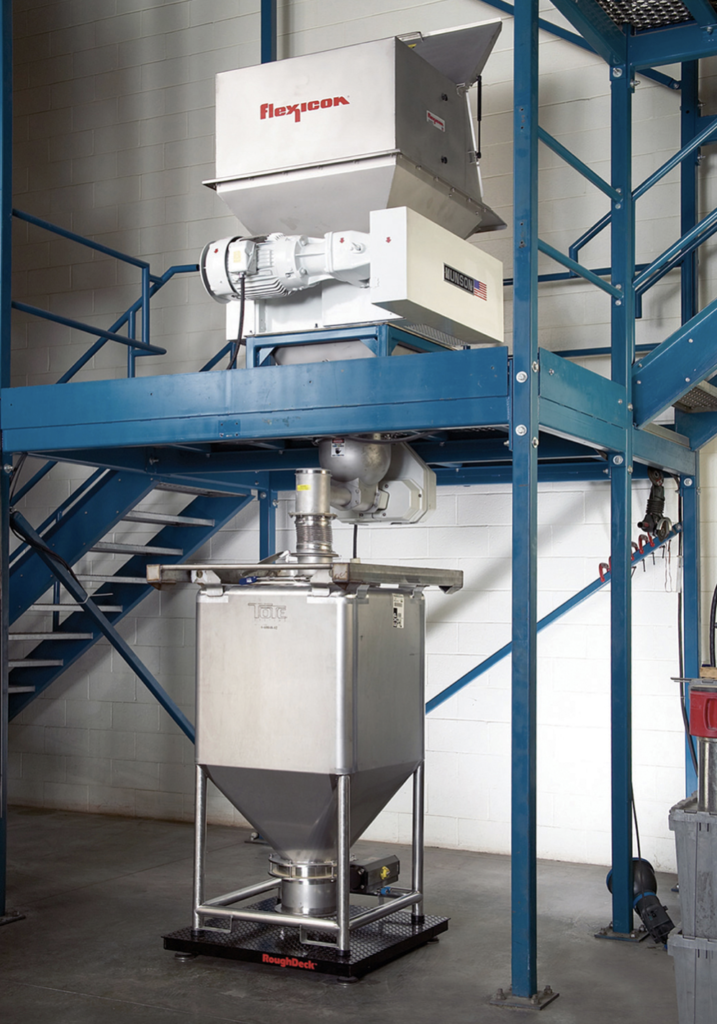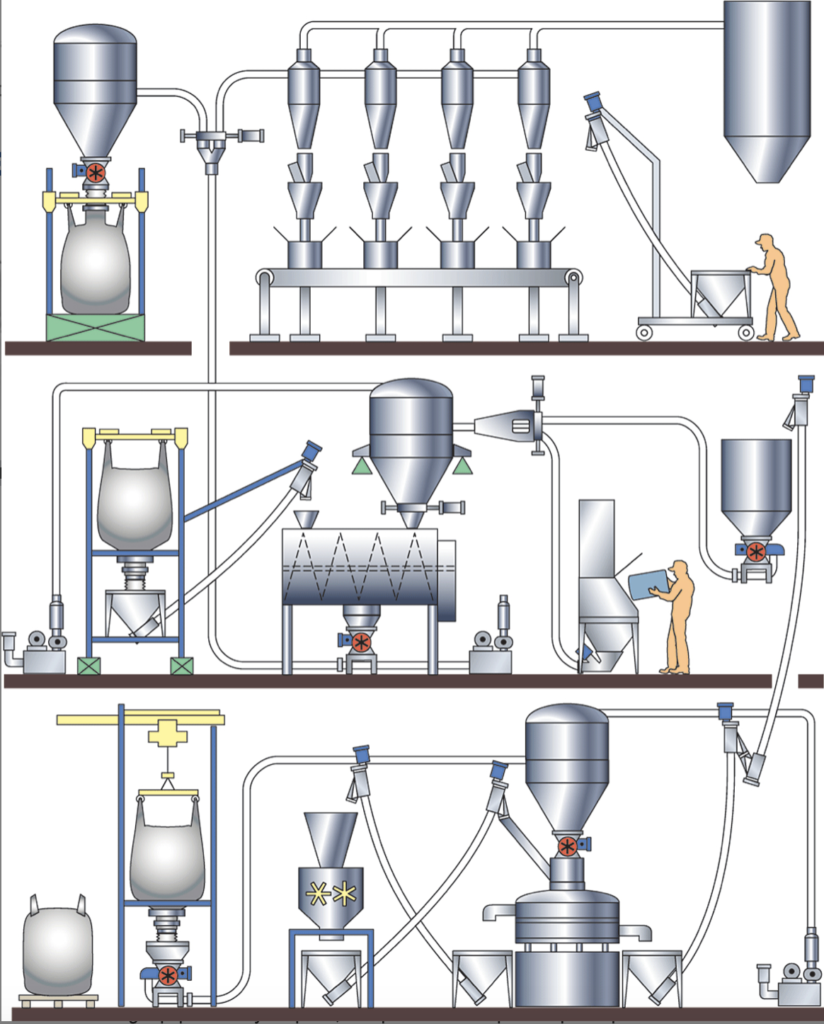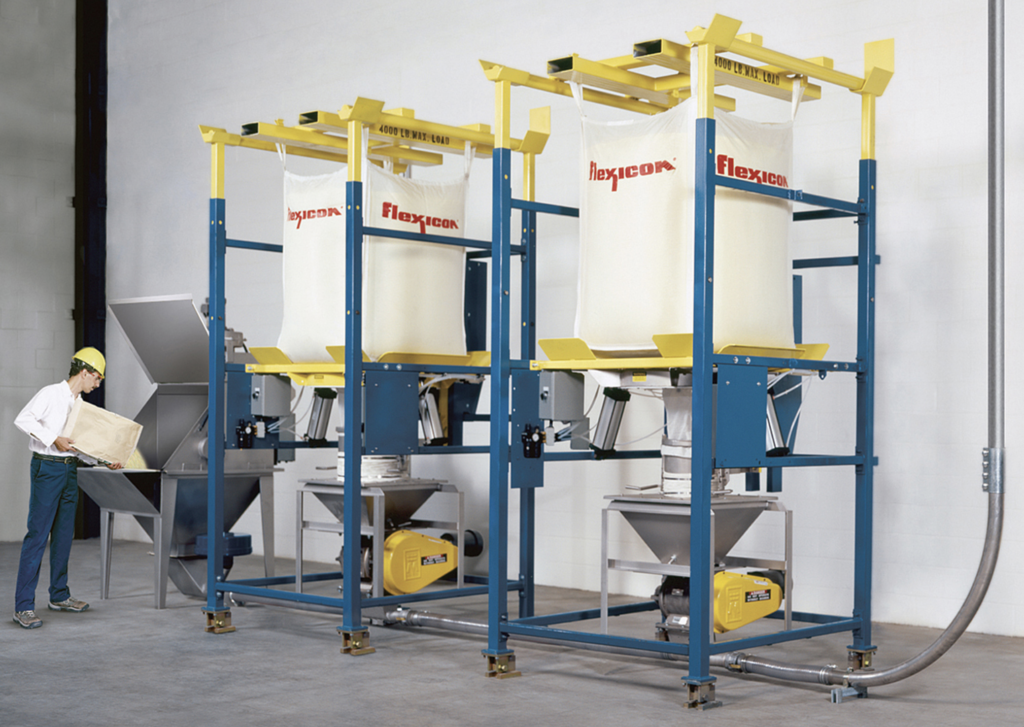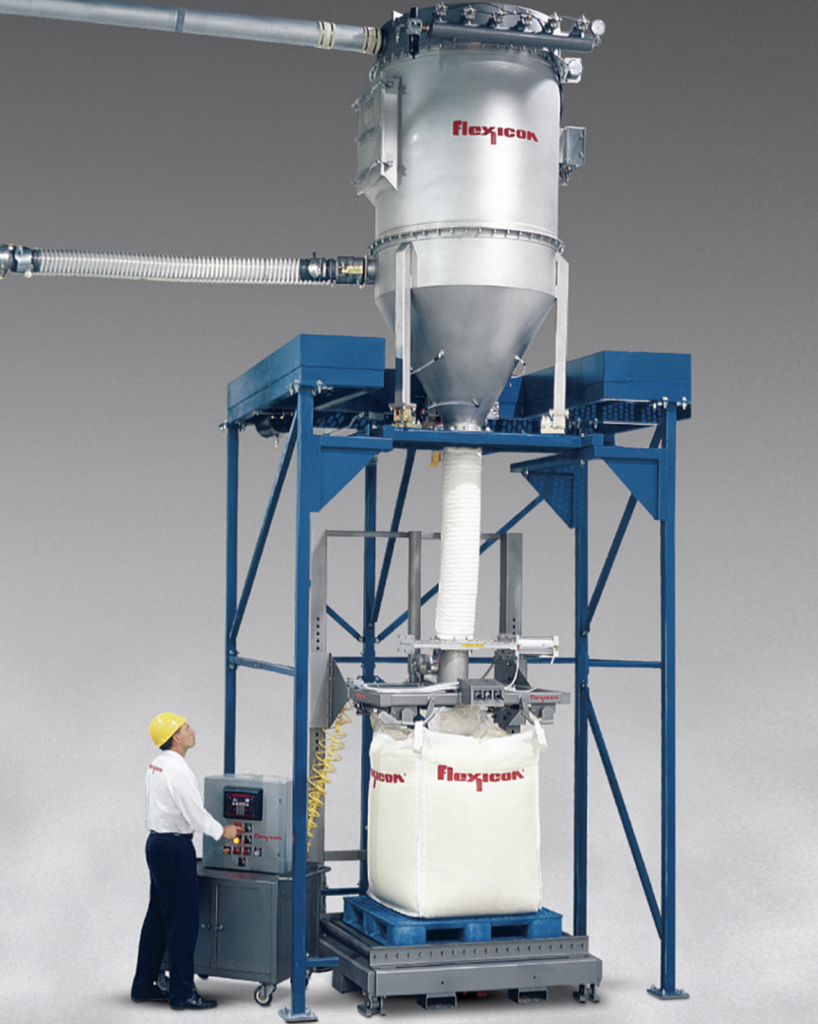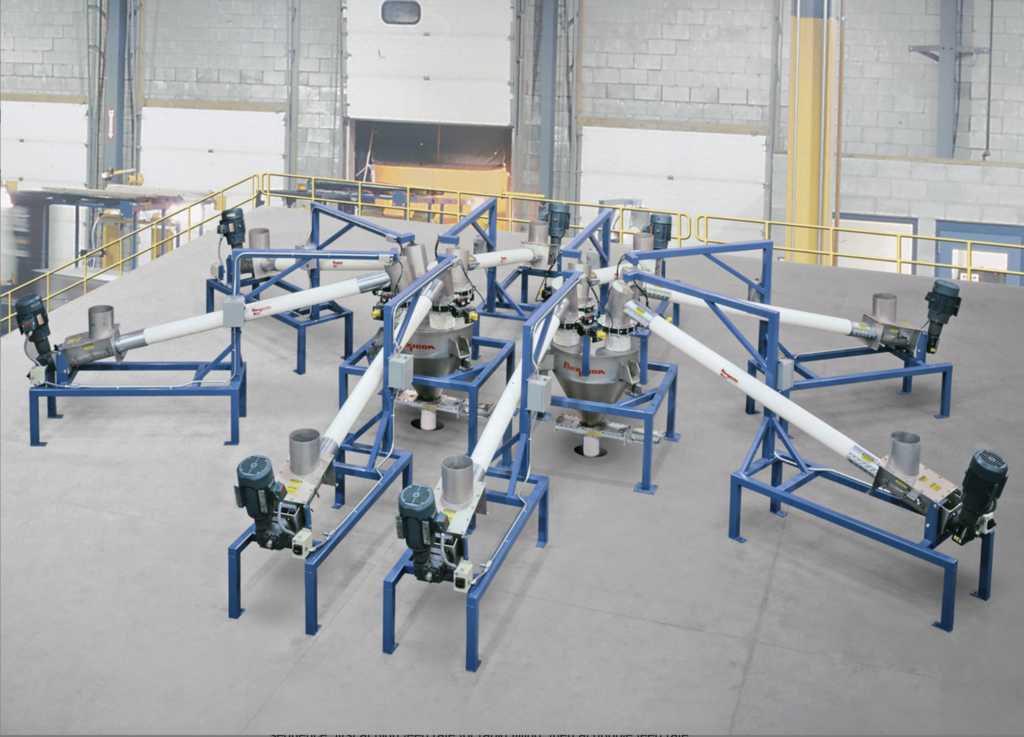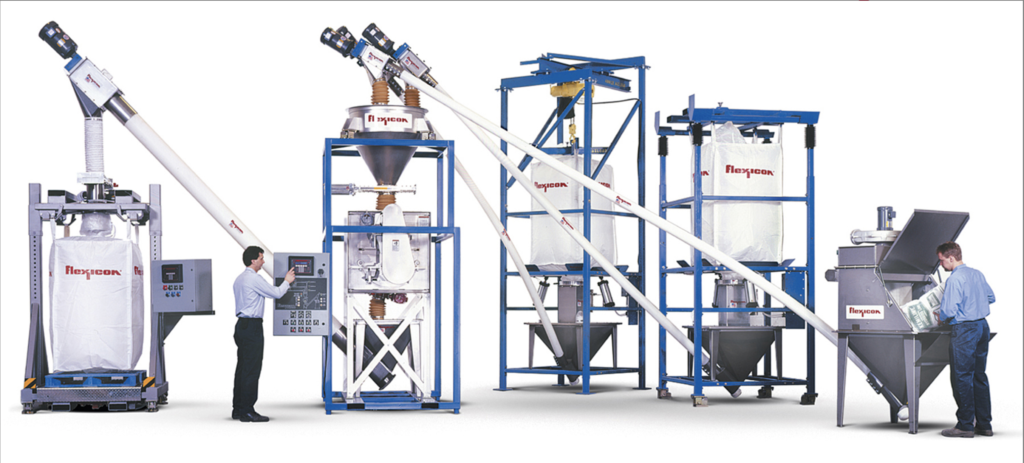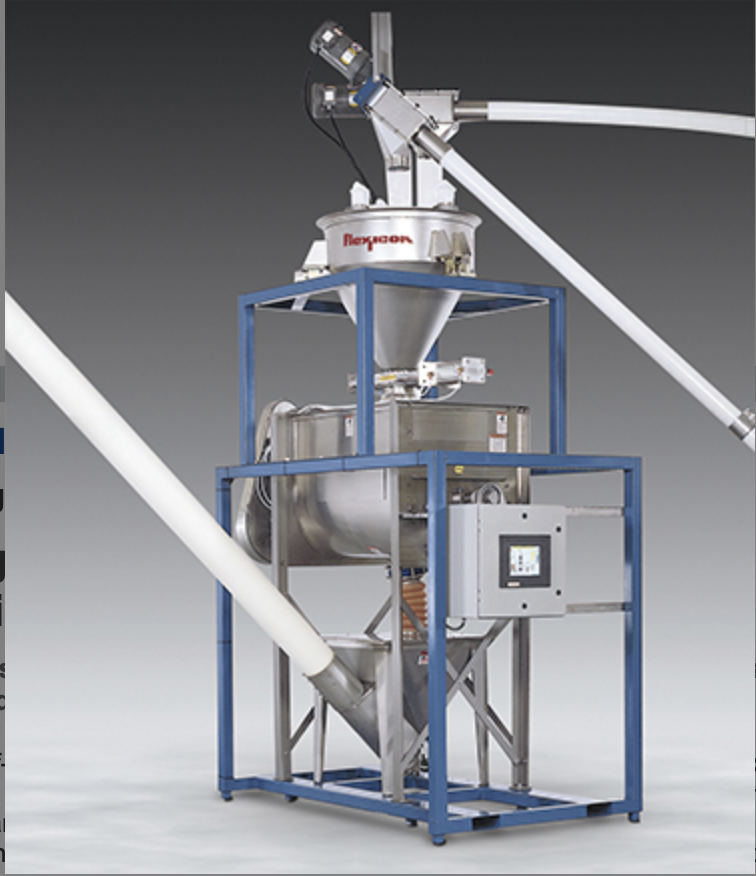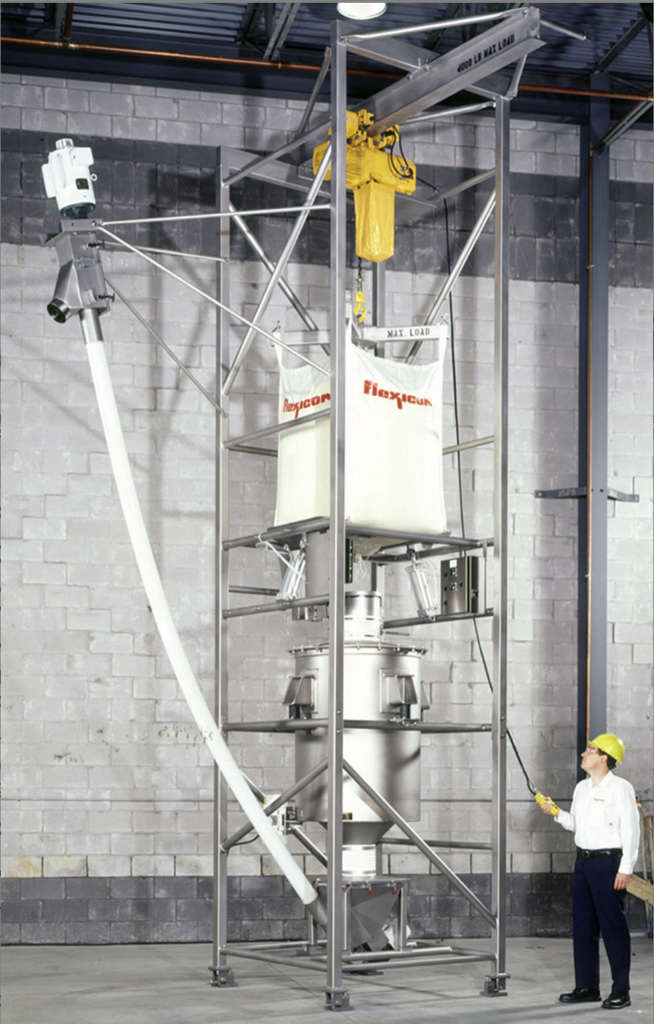Weigh Batching Systems

Move virtually any bulk material, from any upstream source, to any downstream destination
Whether you are sourcing material from bulk bags, silos, manual dumping stations, process equipment or all of the above; weigh batching one ingredient or 50; blending your recipe; filling containers, and/or delivering it to process vessels, packaging lines, or any other destination, Flexicon has the comprehensive selection of equipment you need for a total weigh batching solution.
From individual loss-of-weight bulk bag weigh batch dischargers to automated gain-in-weight batching/blending systems integrated with your upstream and downstream equipment, Flexicon offers you the entire range of specialized equipment—and the engineering talent—required for a smooth start-up and efficient performance.
Equally as crucial to your weigh batching success is the proven ability of Flexicon equipment to move your material—at high rates for fast batching cycles and at steady dribble-feed rates for highly accurate weighments—and to deliver recipes with no separation of blended materials and no exposure to potential contamination.
Whether your ingredients are free-flowing pellets, powders that pack, bridge or smear, products that fluidize, or blends prone to separation, Flexicon can move them positively, weigh them accurately, and deliver them in prime condition.

This turnkey, gain-in-weight batching system conveys material from four Flexicon bulk bag dischargers to a weigh hopper which discharges into a blender. During the blending operation, a subsequent batch is being weighed by the hopper, thereby reducing cycle times. In this case, blended batches are discharged directly into shipping containers.
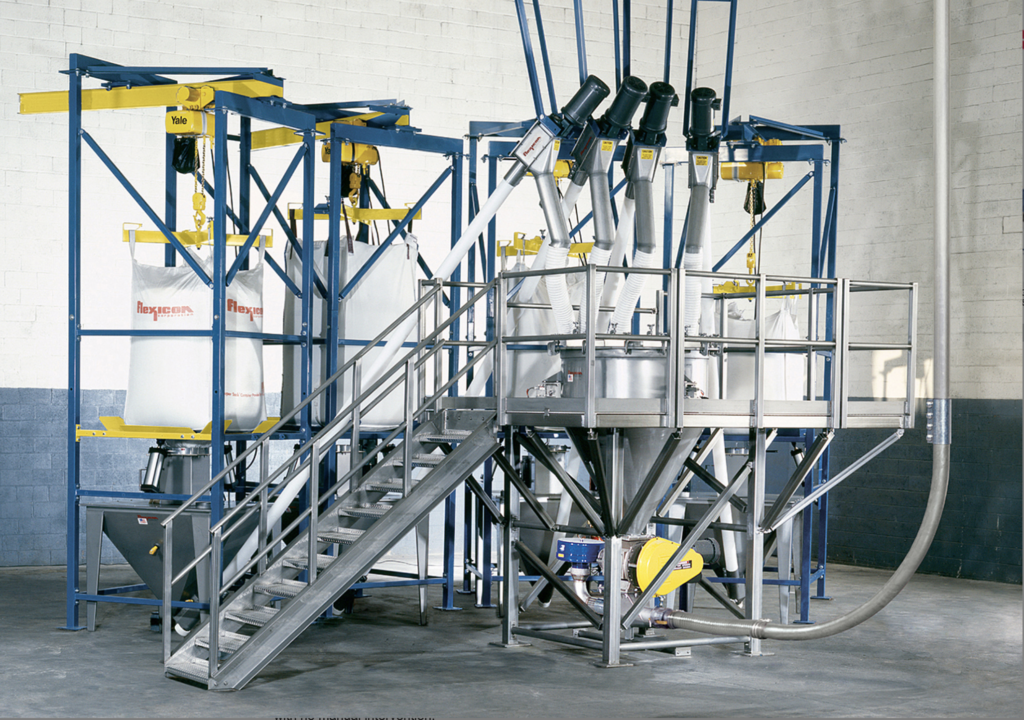
This Automated Weigh Batching System conveys material from Flexicon bulk bag dischargers via Flexicon flexible screw conveyors to a weigh hopper mounted on load cells at mezzanine level. Weigh batches are automatically discharged through a rotary air lock into a Flexicon pneumatic conveying system transporting the pre-weighed batch to a blender.
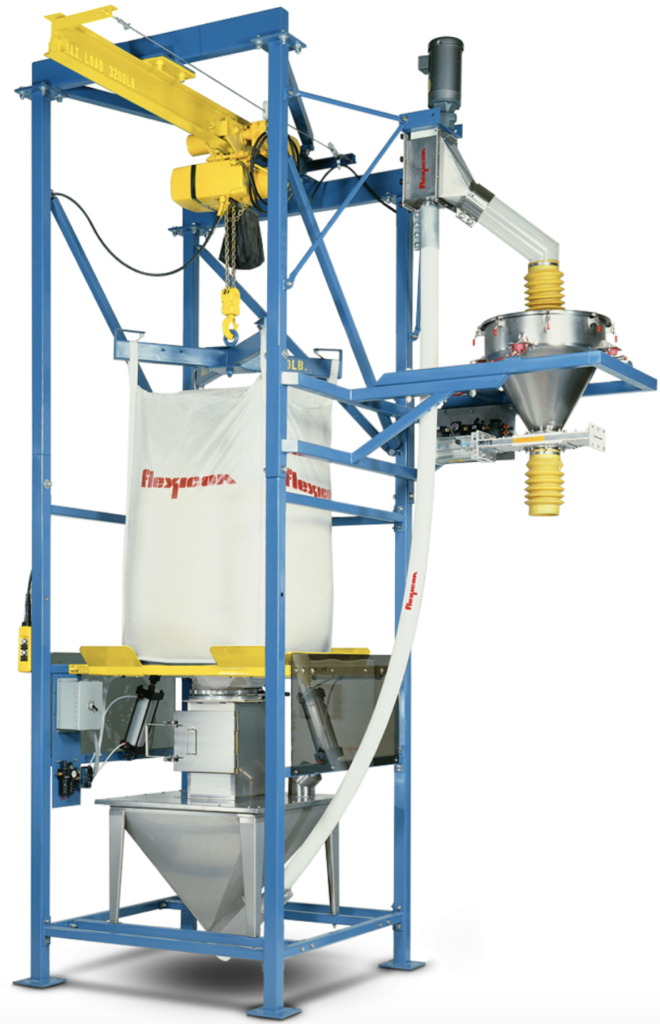
The weigh batch filling head of this bulk bag gain-in-weight batching system can be cantilever-mounted (shown), or mounted remotely above any discharge point desired; the flexible screw conveyor can transport material at any angle to any nearby or distant plant location. Electric hoist and trolley model shown.
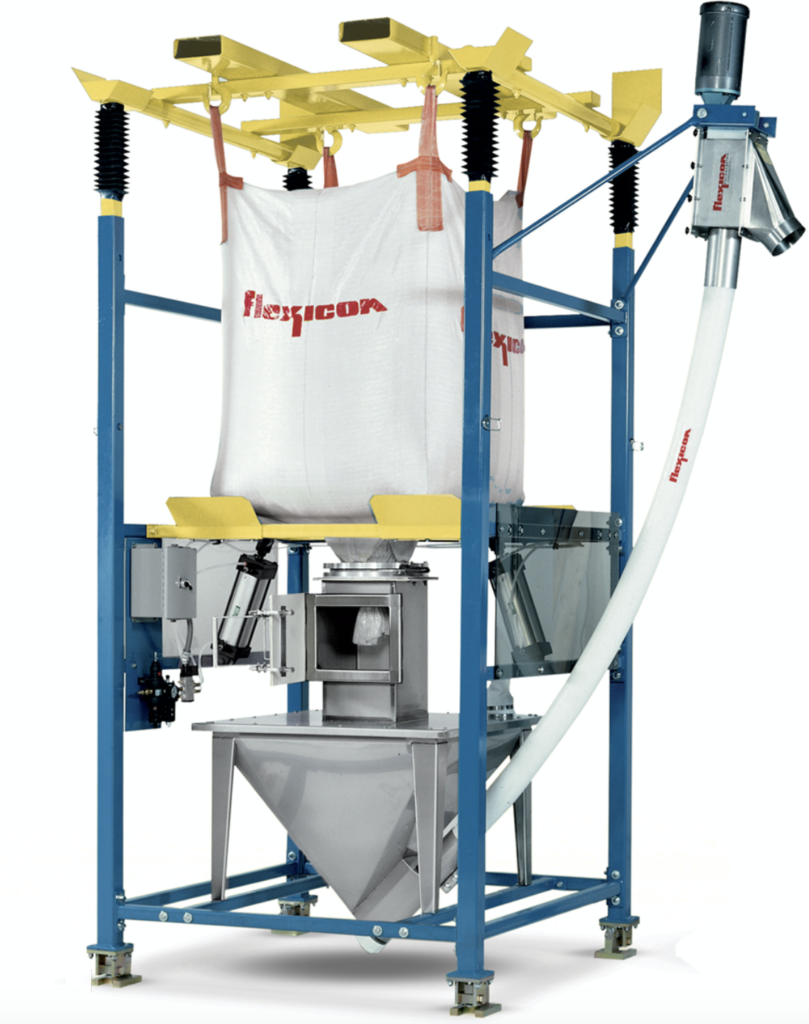
Flexicon Loss-of-Weight Batching Systems discharge one or more bulk bags while weighing the material and conveying the batch directly to a common hopper, blender, conveyor, shipping container, or process vessel automatically, accurately, and economically. This loss-of-weight system is mounted on load cells which transmit the amount of weight lost to a controller which, in turn, stops the conveyor once the target batch weight has been reached.
Simple or sophisticated batch control
Flexicon gain-in-weight batching systems convey bulk ingredients mechanically or pneumatically from any location to a central receiving vessel which is mounted on load cells. The receiving vessel can be a hopper positioned above a blender, reactor, or other process equipment, or it can be the equipment itself.
When the batch sequence is initiated by a manual start button or automated signal, a programmable controller activates the first flexible screw conveyor or rotary airlock valve to begin loading the first ingredient into the receiving vessel at maximum feed rate.
Load cells transmit weight gain information to the controller which steps-down the feed rate to dribble prior to reaching the target weight, for greater accuracy. The controller stops the flexible screw conveyor or rotary airlock valve immediately before the target weight is reached to compensate for material-in-flight.
Whether you require loss-of-weight bulk bag weigh batching units or complete gain-in-weight batching systems, Flexicon offers the in-depth experience, the range of efficient products, and the technical field support you need for guaranteed weigh batching and blending results.
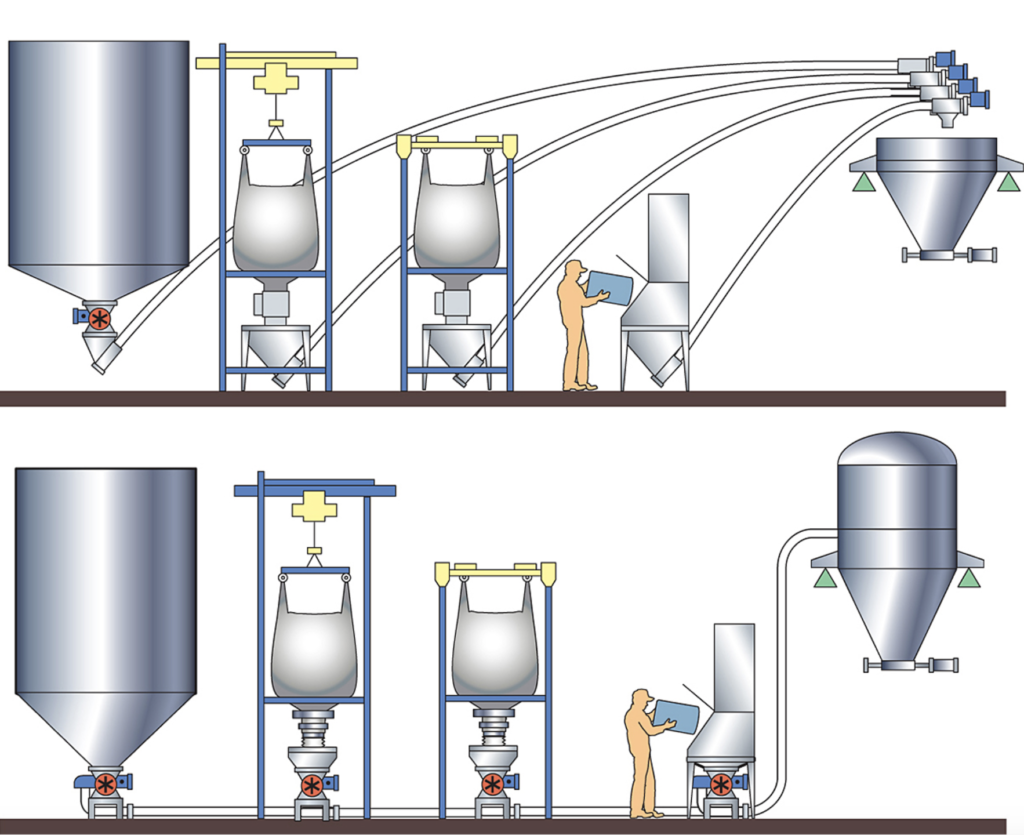
Flexicon mechanical (top) and pneumatic (bottom) gain-in-weight batching systems can transport material from silos, manual dumping stations, process equipment, bulk bags, or any other source to a weight batching hopper, a blender, or other downstream equipment mounted on load cells.
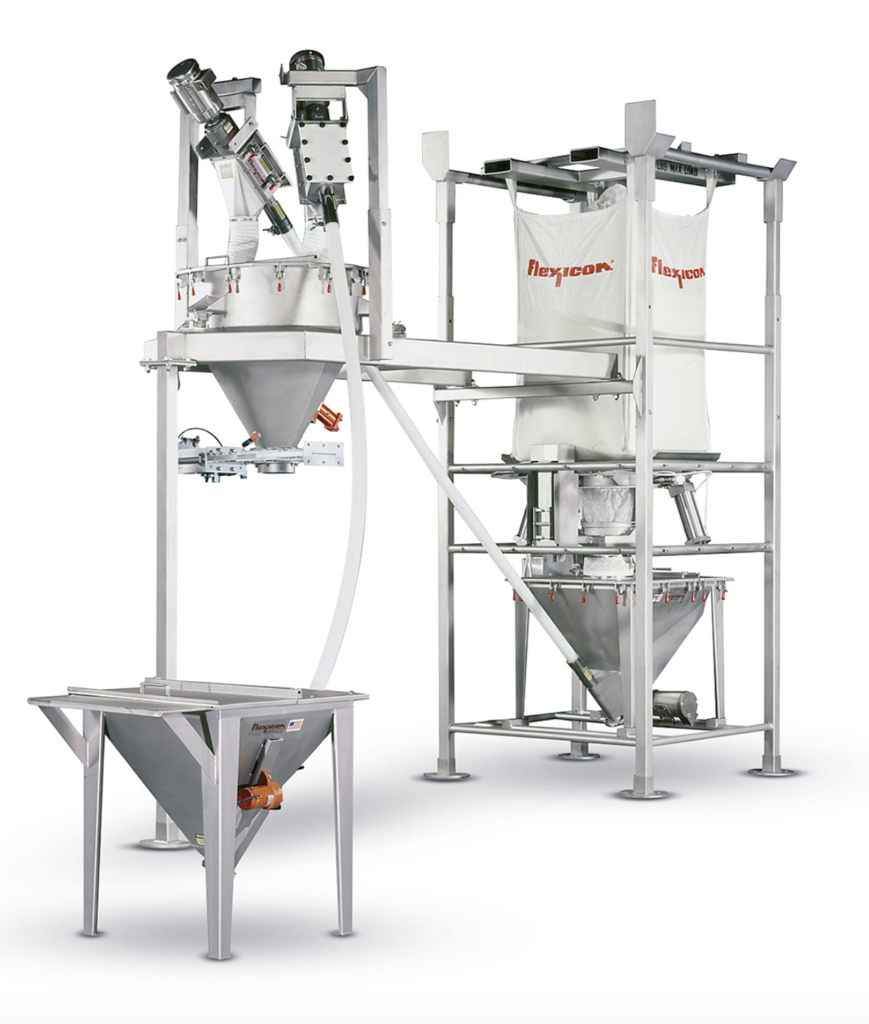
This Gain-in-Weight Batching System allows automated weighing of a major ingredient supplied in bulk bags, and a minor ingredient dumped manually. The central weigh hopper’s load cells transmit weight gain information to a controller that starts and stops the conveyors to weigh each material in sequence, and actuates a slide gate valve to discharge the weighed batch.
Simple or sophisticated batch control
Flexicon bulk bag loss-of-weight batching systems consist of a Flexicon bulk bag discharger mounted on load cells which measure weight loss of each discharger during the batching cycle and transmit the information to a system controller.
The batch sequence is initiated by a manual start button or automated signal.
As the conveyor unloads material at maximum feed rate, the load cells transmit loss-of-weight information to the controller which reduces the feed rate to dribble immediately prior to stopping the flexible screw conveyor or rotary airlock valve once the target batch weight has been discharged. System software permits mid-batch bag changes.
Multiple weigh batch dischargers can each convey a different ingredient to a central discharge point such as a hopper, blender, reactor, or other process equipment.
Whether you require loss-of-weight bulk bag weigh batching units or complete gain-in-weight batching systems, Flexicon offers the in-depth experience, the range of efficient products, and the technical field support you need for guaranteed weigh batching and blending results.

Flexicon mechanical (top) and pneumatic (bottom) loss-of-weight batching systems transport material from one or more bulk bags to a common hopper, blender, conveyor, shipping container, or any process vessel.
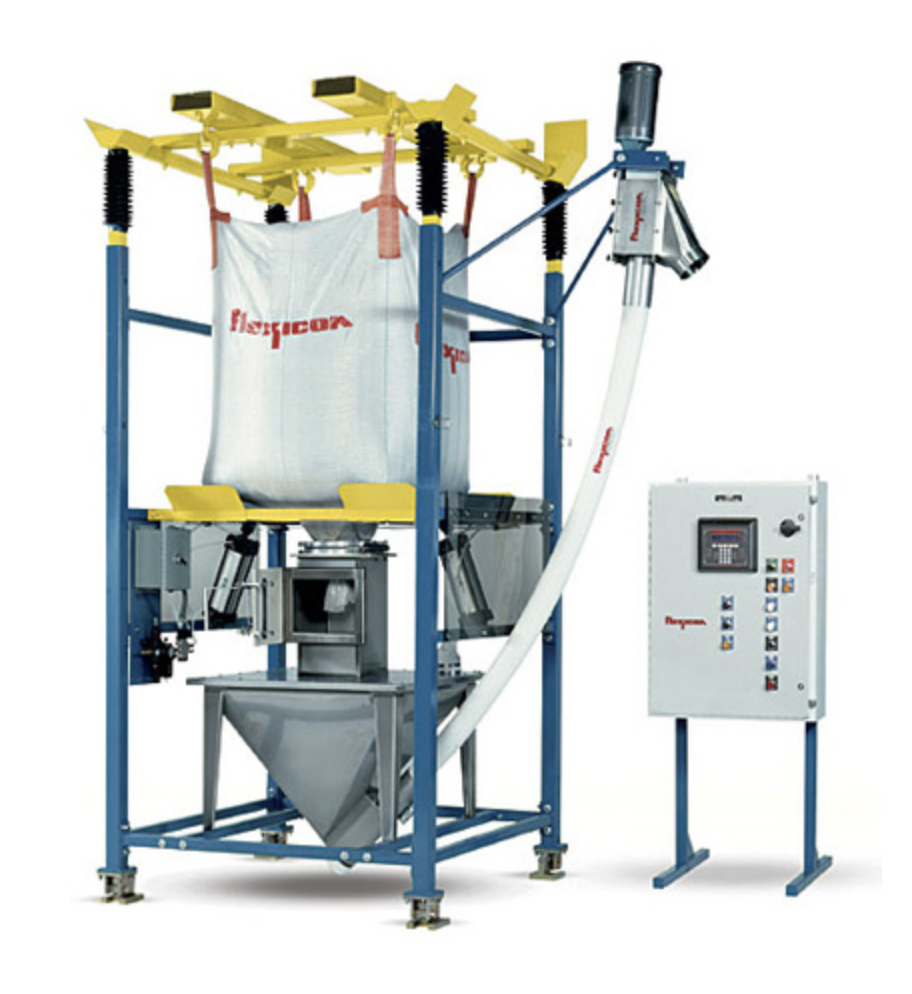
Loss-of-Weight Batching Systems discharge one or more bulk bags while weighing the material and conveying the batch directly to a common hopper, blender, conveyor, shipping container, or any process vessel—automatically and accurately. Load cells transmit the amount of weight lost to a controller, which stops the conveyor once the target batch weight has been reached.

